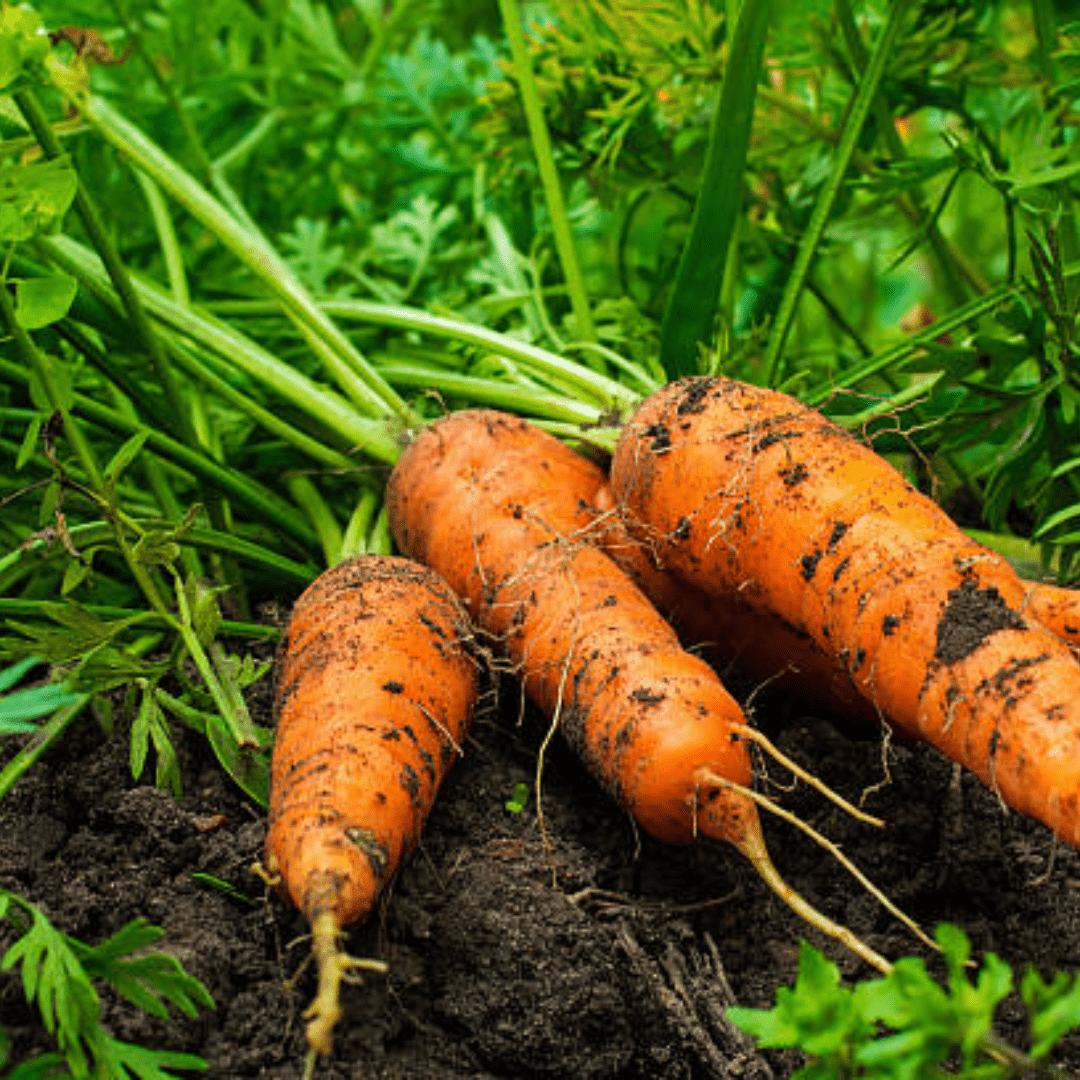Learn how to grow carrots for a bountiful harvest with these expert gardening tips! From choosing the right variety to preparing loose, well-drained soil, growing carrots is easier than you think. Discover the secrets to proper spacing, watering, and thinning to produce sweet, straight roots packed with flavor. With the right care, you can enjoy a steady supply of crisp, homegrown carrots all season long!
Growing your own carrots can be a rewarding and satisfying experience, not to mention the joy of harvesting a bountiful crop of fresh, flavorful carrots straight from your own garden. Whether you’re a seasoned gardener or a beginner, this article will provide you with the essential knowledge and guidance to successfully grow carrots.
From selecting the right carrot varieties to harvesting and storing them for long-term enjoyment, I’ll explore the key steps and techniques that will help you achieve a thriving carrot garden. So, roll up your sleeves and get ready to discover the secrets to growing carrots for a bountiful harvest!
This is a pinnable post. Tap or hover over any image in this post to pin to your Pinterest Boards.
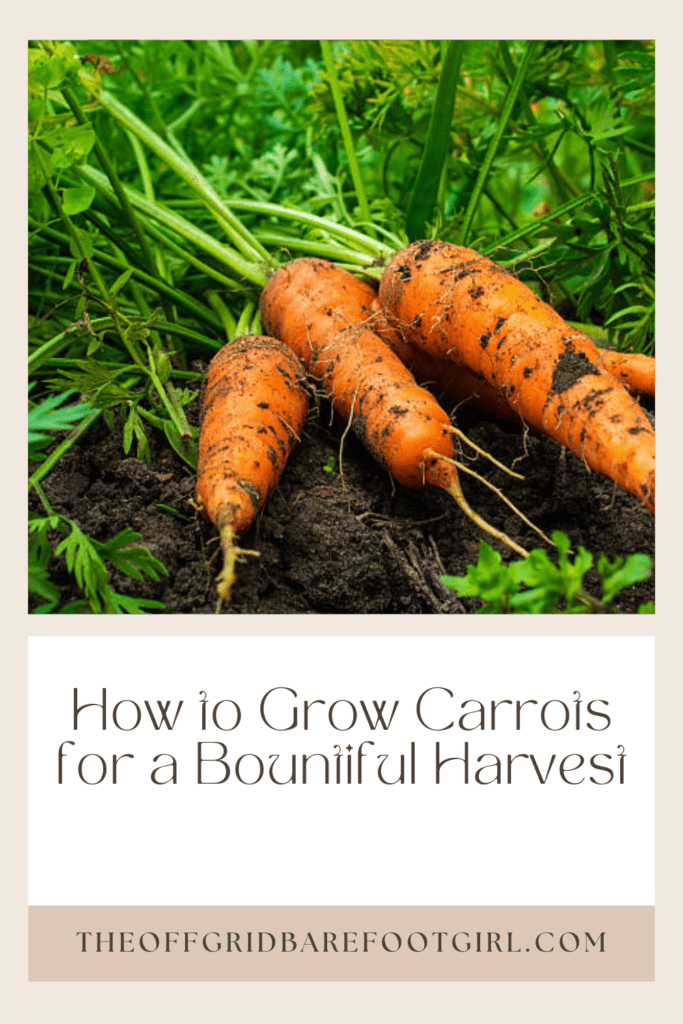
Selecting the Right Carrot Varieties
Carrots come in all shapes, sizes, and colors, just like people. While it may be tempting to grab the first packet of carrot seeds you see, take a moment to consider your options. Do you prefer long and slender carrots or short and stubby ones? Are you a fan of the classic orange variety, or do you want to venture into the world of purple or yellow carrots? Selecting the right carrot variety is essential for a bountiful harvest that suits your taste buds. My favorite go-to carrots to grow are the trusty Danvers carrot variety. Danvers grow really well in my area, and they are a beautiful, dark, rich orange color and taste amazing!
Determining Your Growing Conditions
Before you embark on your carrot-growing journey, it’s crucial to understand your growing conditions. Carrots thrive in loose, well-drained soil that is free from rocks and clumps. They also enjoy a sunny spot in your garden, soaking up the rays like a beach bum on vacation. So, grab your shovel and assess the quality of your soil and the available sunlight in your garden.
Understanding Different Carrot Types
Carrots can be a bit complicated. Just like the different types of people you encounter in your life, there are various types of carrots, too. Some are best suited for snacking on straight from the garden, while others are perfect for adding a burst of flavor to your favorite recipes. Whether you’re looking for baby carrots, juicing carrots, or hearty storage carrots, understanding the different types will help you choose the perfect carrots for your needs.
Preparing the Soil for Carrot Planting
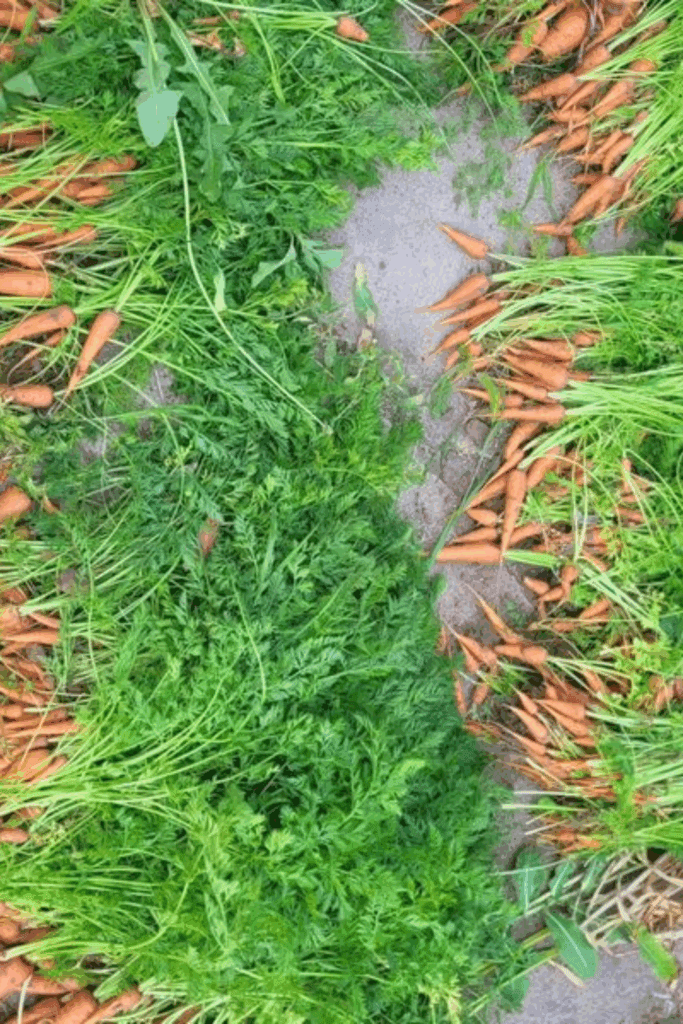
Now that you’ve done some soul-searching and chosen the carrot variety that speaks to your taste buds, it’s time to prepare the soil. Think of it as prepping the stage for your carrot performance. Testing and amending the soil ensures that your carrots have the best possible start in life. Don’t worry; this isn’t a soil talent show – just a little soil TLC to give your carrots the nutrients they need.
Testing and Amending the Soil
Before you dive into carrot planting, it’s a good idea to test your soil. Think of it as giving your soil a check-up to see what it needs. You can find affordable soil testing kits at your local garden center or reach out to a testing lab for a more comprehensive analysis. Once you know what your soil is lacking, you can amend it with organic matter, such as compost or well-rotted manure, to give your carrots a nutrient-rich environment to grow in.
You can also do some simple DIY soil tests yourself with simple items and ingredients you may already have on hand. I wrote an informative post for you so go check it out!
4 Easy DIY Garden Soil Tests to Do Now
Loosening and Aerating the Soil
Now it’s time to get down and dirty with your soil. Carrots have a thing for loose soil – it’s like their version of a soft and fluffy bed. Using a garden fork or tiller, loosen up the soil to a depth of at least 12 inches. Break up any clumps and remove rocks or debris that might obstruct your carrot’s growth. Think of it as giving your carrots a spacious and comfortable home to stretch their roots.
Sowing Carrot Seeds and Seedling Care
Ah, the magic begins! It’s time to sow your carrot seeds and watch them sprout like eager little green soldiers. But wait, there’s a method to this madness. Choosing the optimal time for planting, sowing the seeds correctly, and providing proper care for those delicate seedlings are the secret ingredients to carrot-growing success.
Choosing the Optimal Time for Planting
Timing is everything in life, and it’s no different when it comes to carrot planting. Carrots prefer cooler temperatures, so aim to plant your seeds in early spring or late summer. Depending on your location, you might need to consult your local gardening calendar or ask your green-thumbed neighbor for advice. Listening to their wisdom will help you avoid planting carrots in the scorching heat or the freezing cold.
Proper Seed Sowing Techniques
When it’s time to sow those tiny carrot seeds, remember that you’re dealing with delicate little gems. Carrot seeds are tiny and can easily get lost in the soil or end up in a clump. To ensure even spacing, mix your carrot seeds with a bit of sand before sowing them. Gently sprinkle the mixture along the prepared soil, cover them with a thin layer of soil, and give them a good pat.
I cover my seeds with wet cardboard until they sprout. Carrots need darkness in order to sprout. You can even lay a piece of board over them. Just remember to keep the soil damp and check on them daily until you see some sprouts. Once they have sprouted, remove the dark covering.
Caring for Carrot Seedlings
Once your carrot seedlings begin to emerge like tiny green blades, it’s time to shower them with some TLC. Thin out the seedlings, so they have enough room to grow without competing for resources. Keep the soil consistently moist, but not drenched, as carrots appreciate a Goldilocks level of hydration – just right. And remember, don’t forget to cheer them on and whisper words of encouragement to help them grow up big and strong!
Providing Adequate Water and Sunlight
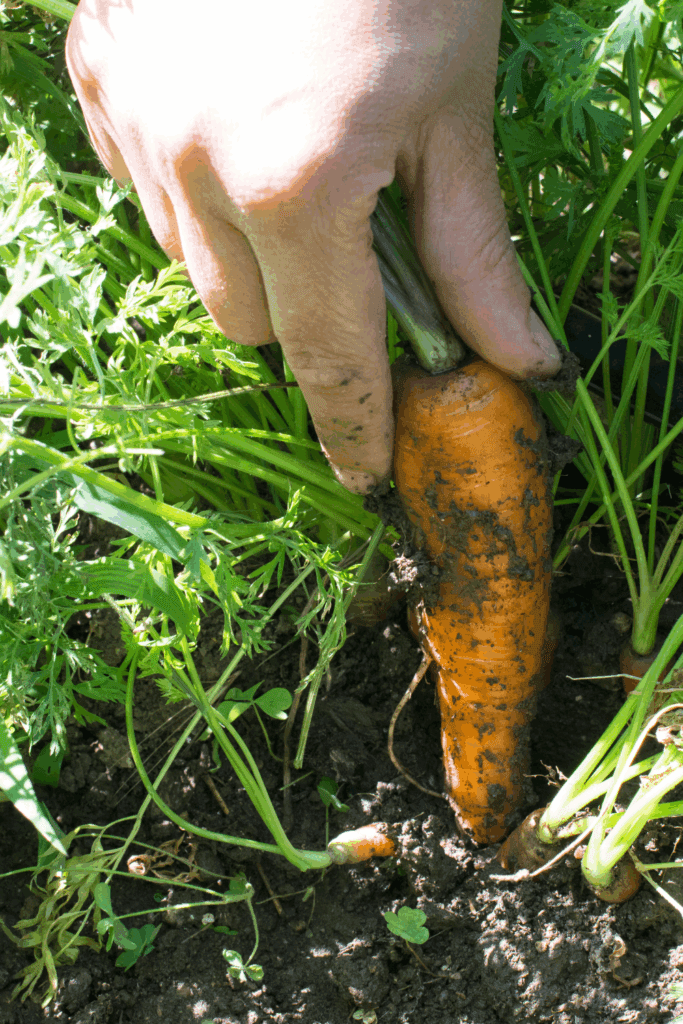
We all need water and sunlight to thrive, and carrots are no exception. Proper watering techniques and understanding their sunlight requirements will ensure your carrot patch becomes a vibrant oasis of rooty goodness.
Watering Carrot Plants
Carrots are like sponges, absorbing water like it’s their favorite hobby. To keep your carrots happy and hydrated, water them consistently throughout their growing season. Make sure the soil is moist, but not waterlogged, as soggy conditions can lead to rotting roots. And remember, if it rains, give yourself a break from watering duties and let Mother Nature handle it.
Understanding Carrot Sunlight Requirements
Carrots are sun lovers, and they need their daily dose of sunshine to thrive. Plant them in a spot where they can soak up at least six hours of direct sunlight each day. If your garden resembles a shady hideaway, carrots might throw a tantrum and produce lackluster roots. So, give them the spotlight they deserve and watch them shine.
Managing Weeds and Pests in Carrot Beds
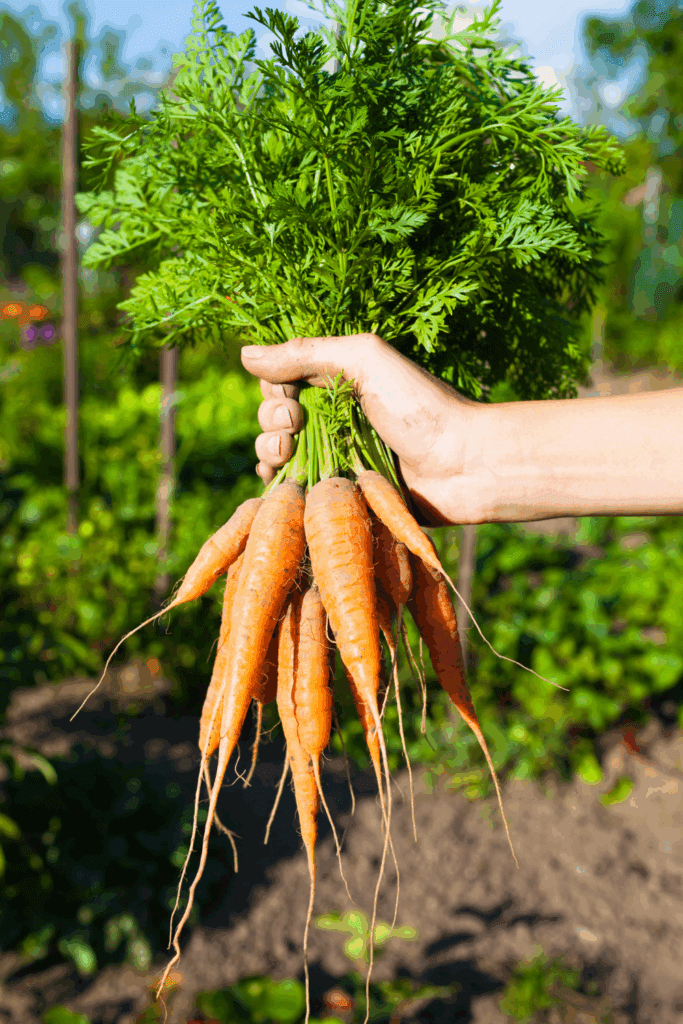
Preventing and Controlling Weeds
Weeds are like those irritating neighbors who always show up uninvited and never leave. To prevent them from taking over your carrot beds, it’s important to start with a weed-free foundation. Before sowing your carrot seeds, make sure to remove any existing weeds and carefully cultivate the soil. Adding a layer of mulch around the carrot plants will help suppress weed growth as well. If pesky weeds do manage to sprout, don’t fret! Gently hand-pull them, taking care not to disturb the delicate carrot roots.
Identifying and Managing Carrot Pests
Carrot pests are like the unwanted party crashers of your garden. The most common culprits include carrot flies, aphids, and nematodes. Keep an eye out for any signs of damage, such as wilting leaves or tunneling in the roots. To prevent these pesky pests, consider using row covers or floating row covers to protect your carrot plants. If you do spot any unwanted visitors, try organic insecticidal sprays or companion planting with plants that repel pests, such as marigolds or onions.
Proper Thinning and Transplanting Techniques
Thinning Carrot Seedlings
Carrot seedlings are like a group of friends who need their personal space. If they’re overcrowded, none of them will thrive. Once your carrot seedlings have emerged and developed their first true leaves, it’s time for some thinning. Use a pair of scissors to snip away the excess seedlings, leaving about 1-2 inches of space between the remaining plants. This will ensure that each carrot has enough room to grow to its full potential. Think of it as giving your friends some breathing space so they can truly shine.
Transplanting Carrots to Final Positions
Sometimes, your carrots need a change of scenery, just like you do. If you started your carrot seeds in a nursery tray or tray cells, it’s important to transplant them to their final positions in the garden. Be gentle when handling the delicate carrot seedlings, as they can be quite sensitive. Dig a small hole in the soil, making sure it’s deep enough to accommodate the entire length of the carrot. Gently place the seedling in the hole and cover the roots with soil, pressing it down gently. Carrots do best when directly sown, so keep that in mind when planting time comes.
Fertilizing and Maintaining Carrot Plants
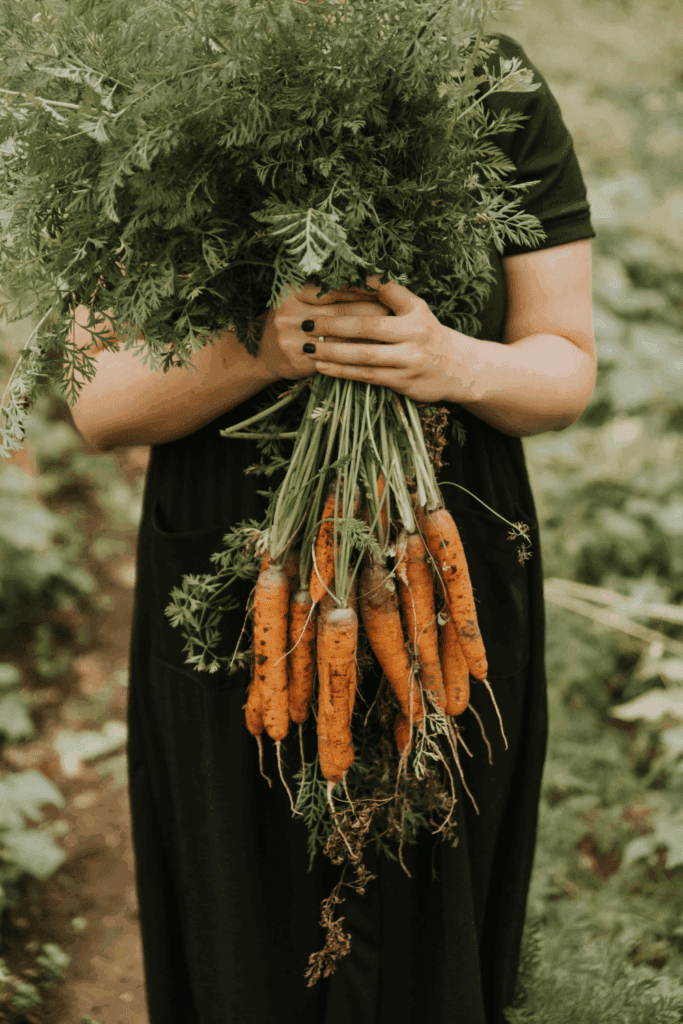
Choosing the Right Fertilizer
Carrots need nourishment, just like you need your daily cup of coffee. When selecting a fertilizer, opt for one with balanced nutrients, particularly higher in phosphorus and potassium, which promote root growth. Organic options like compost or well-rotted manure are excellent choices, providing a slow release of nutrients. Remember to avoid using excessive nitrogen-based fertilizers, as this can lead to lush foliage but stunted and forked carrots. Give your carrots the fuel they need to grow, but don’t overload them like you would with a double-shot espresso.
Applying Fertilizer and Nutrients
Once your carrots have settled into their garden home, it’s time to give them a nutrient boost. Prior to sowing the carrot seeds, mix your chosen fertilizer into the soil to ensure an even distribution of nutrients. If you’re using organic options, apply them sparingly once a month throughout the growing season. Carrots have delicate roots, so it’s crucial not to disturb them during the fertilization process.
Regular Maintenance Practices
Maintaining your carrot beds is like keeping up with household chores – necessary, but sometimes a little tedious. Regularly inspect your carrot plants for signs of disease or pest infestation and take appropriate action. Water your carrots regularly, keeping the soil consistently moist, but not waterlogged. Remember to weed diligently, as competition from weeds can hamper carrot growth. Lastly, be a supportive friend and provide a little shade to your carrot tops by gently hilling soil around them. A little TLC goes a long way in nurturing healthy and vibrant carrot plants.
Harvesting and Storing Carrots for Longevity
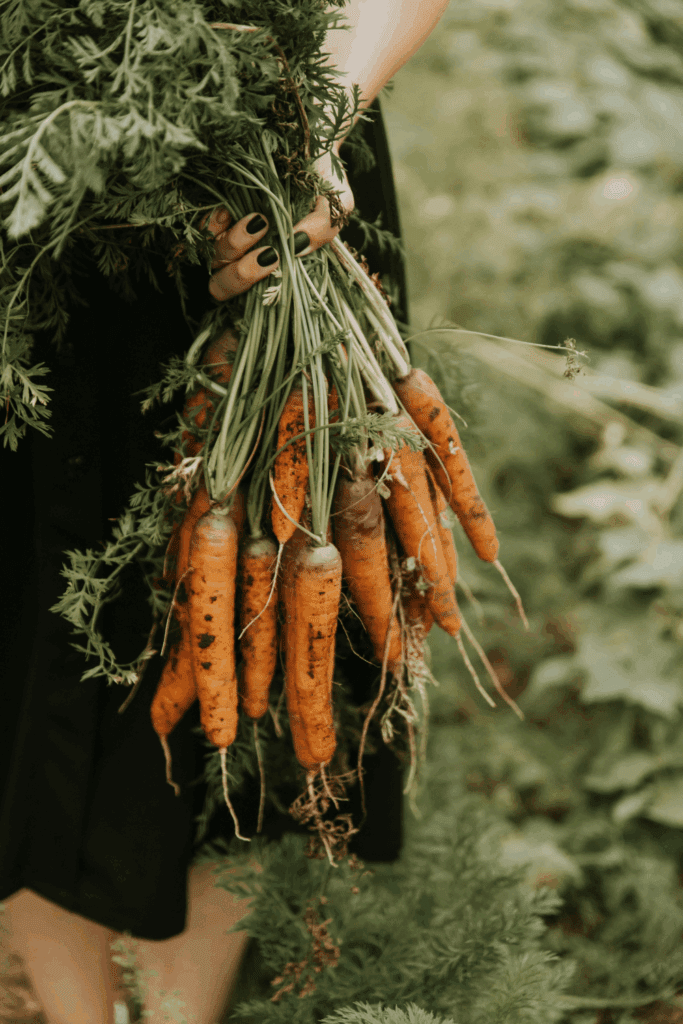
Determining the Optimal Harvest Time
Knowing when to harvest your carrots is like knowing when to pick the perfect avocado – it requires a bit of finesse. Carrots are usually ready for harvest when their roots have reached the desired size and color. Gently pull up a test carrot or two to check if they match your preference. The ideal carrot should be firm, crisp, and brightly colored. Don’t worry if you accidentally pull up a few small ones. Consider it a taste test session and an excuse to enjoy some baby carrots.
Proper Harvesting Techniques
Harvesting your carrots is like digging for buried treasure. To avoid damaging the delicate roots, loosen the soil around the carrot with a garden fork or trowel before gently pulling it up. Hold the green tops near the crown and give a little tug, letting the carrot release from the soil. If any carrots resist your efforts, avoid yanking and instead gently dig around them to avoid breakage. Treat your carrots like the precious gems they are and handle them with care.
Storing Carrots for Extended Shelf Life
You’ve harvested your carrots, and now it’s time to ensure they last like a well-preserved secret. To store your carrots, remove the greens or tops, which can draw moisture from the roots. Gently brush off any excess dirt, but avoid washing them, as this can promote spoilage. Place your carrots in a container or bag with a few air holes to allow for proper airflow. Store them in a cool, dark place, such as a cellar or refrigerator. Stored properly, carrots can stay fresh for several weeks, giving you plenty of time to enjoy their sweet, crunchy goodness.
Conclusion
In conclusion, growing carrots can be a gratifying endeavor that allows you to enjoy the delicious rewards of your labor. By following the steps outlined in this article, from choosing the right varieties to providing proper care and maintenance, you can ensure a successful carrot harvest. Whether you’re a gardening enthusiast or just starting out, don’t hesitate to give carrot cultivation a try. With a little time, patience, and dedication, you’ll soon be savoring the sweet and crispy goodness of homegrown carrots that will elevate your meals and bring a sense of pride to your garden.
Resources: Here are some helpful resources for further information.
- How to Plant Carrot Seeds (for Maximum Germination) – By Homesteading Family
- How to Grow Carrots from Seed to Harvest: Tips & Pics – By The Country Basket
- Learn How to Grow Carrots: Gardening 101 for Beginners – By BloomInThyme
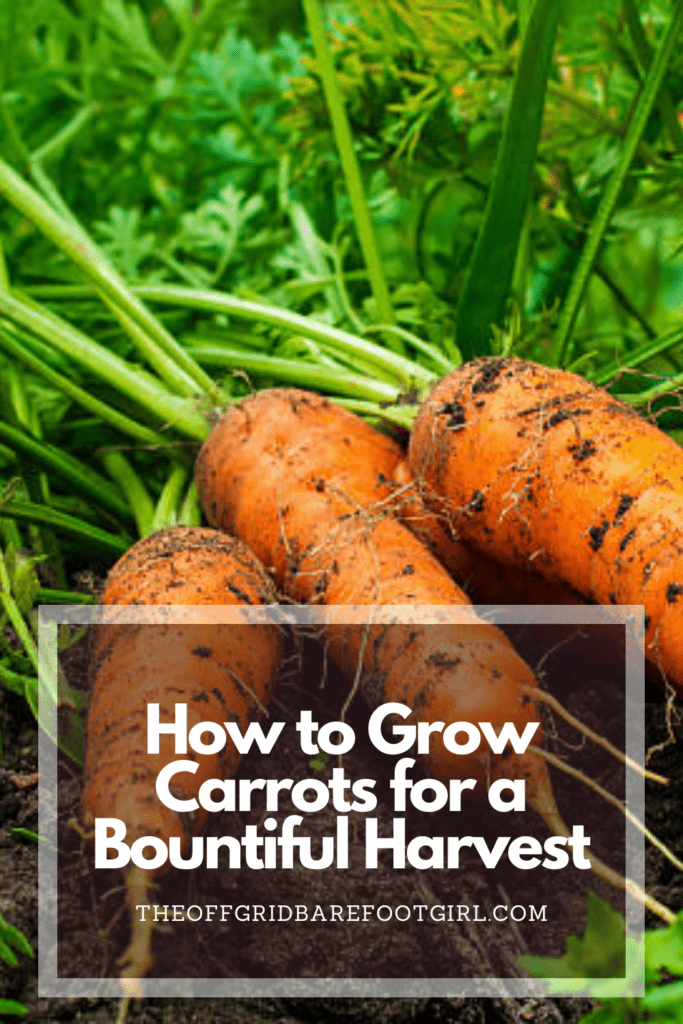
Frequently Asked Questions
1. Can I grow carrots in containers or pots?
Yes, carrots can be successfully grown in containers or pots. Choose a deep container with good drainage and fill it with loose, well-draining soil. Select shorter varieties of carrots that are suitable for container gardening. Remember to provide adequate water and sunlight for your container-grown carrots.
2. How long does it take for carrots to mature?
The time it takes for carrots to mature can vary depending on the variety and growing conditions. On average, most carrot varieties take approximately 60 to 80 days from sowing seeds to harvest. However, some baby carrot varieties can be ready for harvest in as little as 30 days, while larger varieties may take up to 90 days or more.
3. How do I know when carrots are ready to be harvested?
Carrots are usually ready to be harvested when their roots have reached the desired size and color. Gently pull up a few carrots and examine their size. Carrots are typically ready for harvest when they reach about 1/2 inch to 1 inch in diameter. Additionally, check the carrot tops – if they appear healthy and vibrant, it is a good indication that the carrots are ready to be harvested.
4. Can carrots be stored for a long time?
Yes, carrots can be stored for an extended period if stored properly. After harvesting, remove the carrot tops and gently brush off any excess soil. Store carrots in a cool, dark, and well-ventilated place, such as a root cellar or the refrigerator. Properly stored carrots can stay fresh for several weeks to a few months, depending on the variety and storage conditions.
Summary
I hope I have inspired you to grow carrots with these tips and products.
If you were encouraged by this post, I invite you to check out my FREE Printables Page for fun free printables, planners, and charts.
ENTER MY FREE Printables Page HERE
Here are some more of my gardening inspiration posts to check out!
Prep Your Garden for Spring Planting with These Expert Tips!
How to Grow a Prepper Garden to Survive and Thrive
The Best Garden Tools You Need for a Productive Season
Fastest Growing Vegetables for Your Survival Garden
How to Grow Marigolds As Pest Control In Your Vegetable Garden
Must-Have Tools for a Successful Balcony Vegetable Garden
How to Effectively Combat Powdery Mildew in Your Garden
The Best Tips for Organic Gardening
How to Release Ladybugs In Your Garden for Organic Pest Control
The Best Garden Snail Control Strategies
The Best Spring Vegetables to Grow in Your Garden
Seed Starter Mix: How To Make Your Organic Seed Starter Mix At Home
How to Grow a Productive Canning Garden
How to Plant and Grow a Salsa Garden
Easiest Heirloom Vegetable Seeds to Grow Now
How to Use the Hand Twist Claw Tiller: Tackling Tough Soil
Planning Your Garden: How to Plan a Vegetable Garden: Expert Green Thumb Tips!
Winterizing the Garden: How to Winterize Your Vegetable Garden: Step-by-Step Checklist
Mulching the Garden: How to Make Leaf Litter Mulch
Grow a Pumpkin Patch: How to Grow a Pumpkin Patch in Your Backyard
How to Grow a Fall Garden: 9 Best Fall Crops
Clever Ways to Incorporate Indoor Composting into Your Home
How to Start Composting for the Garden: A Step-by-Step Guide
The Ultimate Guide to Composting in Your Suburban Backyard
Why I Built A Survival Garden in My Backyard
16 Best Medicinal Herbs to Grow in Your Garden Now
Blessings,
The Off Grid Barefoot Girl

